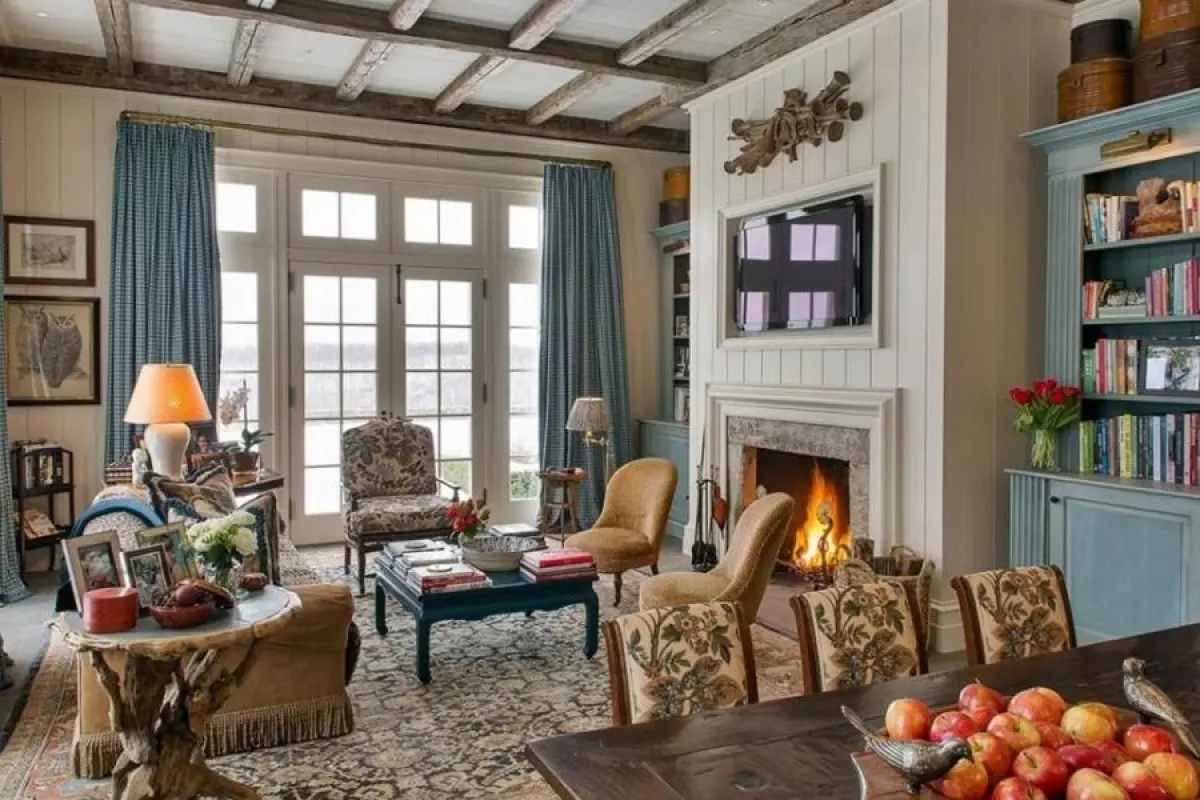 Cozy ethnic living room in light colors
Cozy ethnic living room in light colors
Embracing History: The Evolution of German Style
The German design direction evokes images of neat, toy-like houses with whitewashed facades divided by narrow slats. This architectural style, known as half-timbered houses or fachwerk, is just one branch of the classic German interior design style. While it is true that the German style shares similarities with the Empire style, let's delve into the history and explore its unique features. The German style embraces strictness, restraint, and laconic elegance, yet it exudes a certain gloss and cold slickness. Join us as we explore the distinct characteristics of the German style and discover how each room can be beautifully furnished.
A Glimpse into the Characteristic Features
In the German style, functionality and comfort harmoniously coexist, creating the hallmark of this design. Every piece of furniture is strategically placed to allow for easy movement and convenience. Designers prioritize utility before aesthetics. The color palette tends to be calm, reminiscent of classic interiors, with shades of white and brown. Decorative elements are used sparingly, combining angular furniture with soft curves. Podiums and architectural ledges add depth and dimension to the space. Floral motifs and contrasting stripes in upholstery and textiles are also common features.
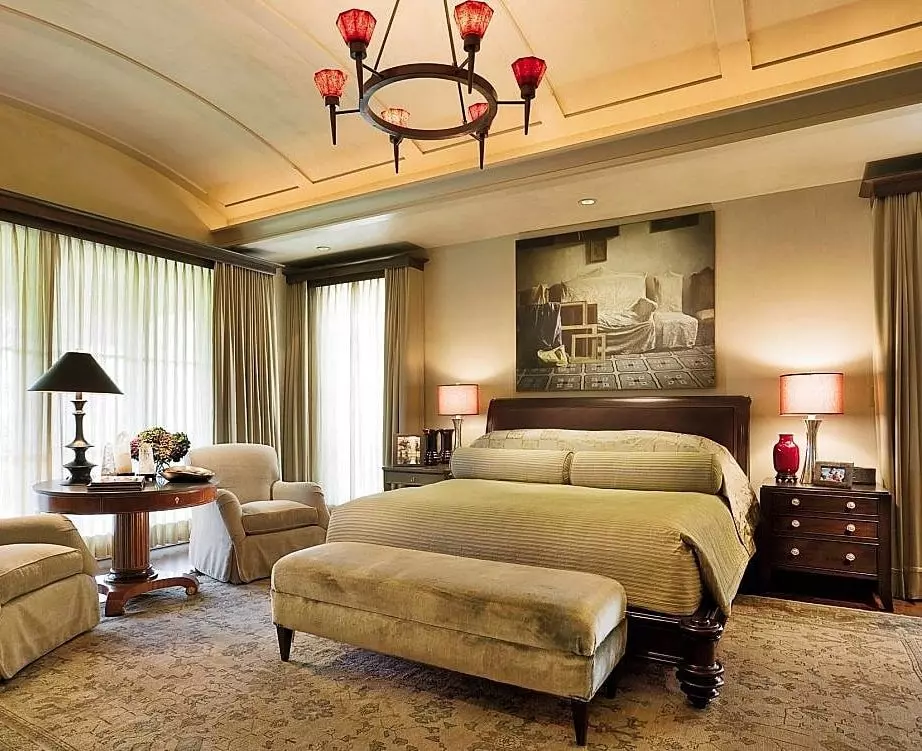
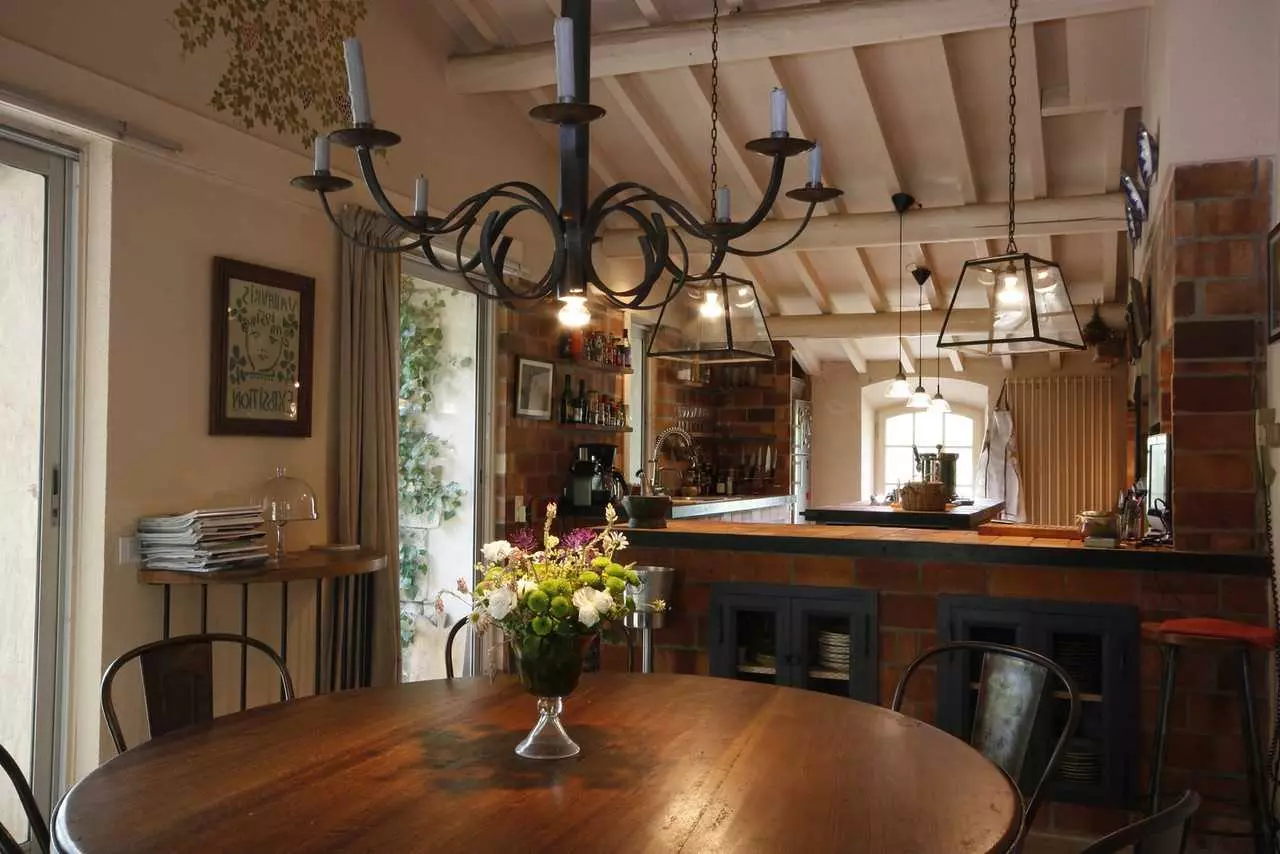 Wooden furniture, brown painted walls, and large sash windows. Chalet-style room with candlestick chandelier and large wooden table.
Wooden furniture, brown painted walls, and large sash windows. Chalet-style room with candlestick chandelier and large wooden table.
The Art of Materials and Finishing
When it comes to finishing, German interiors showcase a simple, non-textured plaster for ceilings, with the option of matte stretch fabric in modern variations. Classic German interiors often feature decorative wooden beams on the ceiling, reminiscent of Bavarian houses. Walls are painted, wallpapered, or covered in plaster, with monochromatic muted shades or discreet vegetal patterns. The floor, traditionally made of hardwood, now includes modern options such as laminate, parquet, or tiles for kitchens and bathrooms.
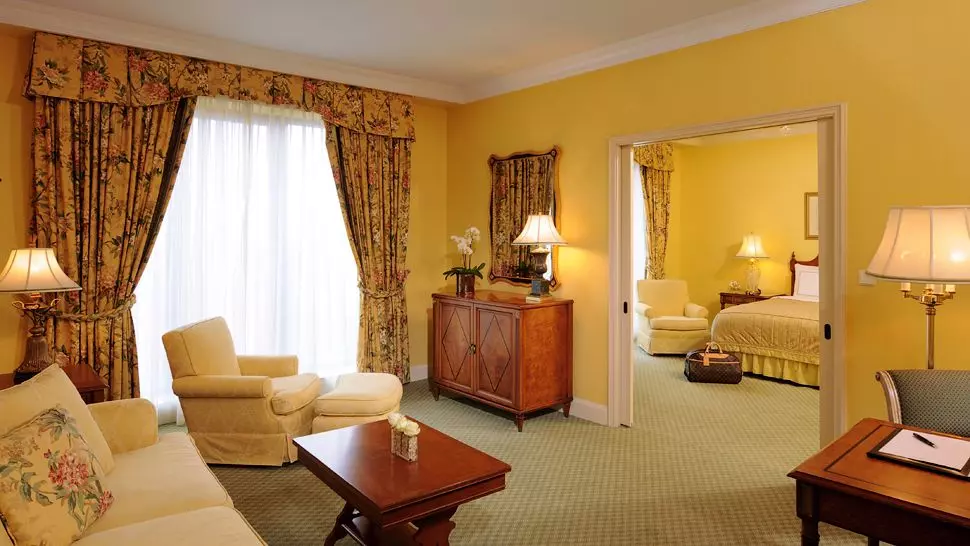
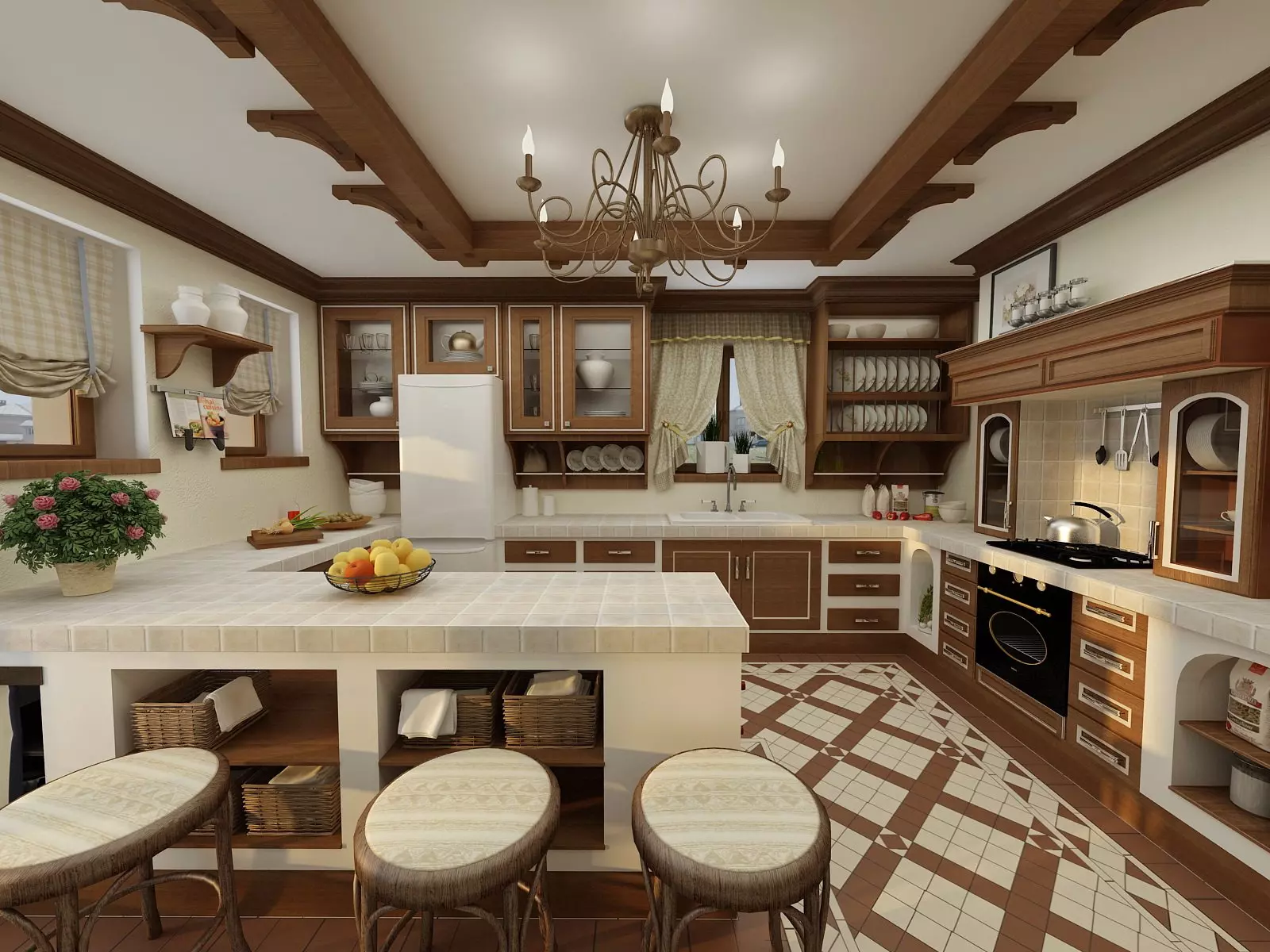 Yellow painted walls for traditional room design. Nice ethnic fachwerk finishing in a white-colored kitchen.
Yellow painted walls for traditional room design. Nice ethnic fachwerk finishing in a white-colored kitchen.
The Harmonious Color Palette
The German style embraces a color palette based on white and brown tones, which seamlessly blend with the wooden surfaces. Dark chocolate, nut, terracotta, sepia, vanilla, bronze, and coffee shades create a warm and inviting atmosphere. Occasionally, accents of yellow, blue, Prussian blue, royal purple, and charoite bring vibrancy to the space. The German style also effortlessly incorporates black and gray hues.

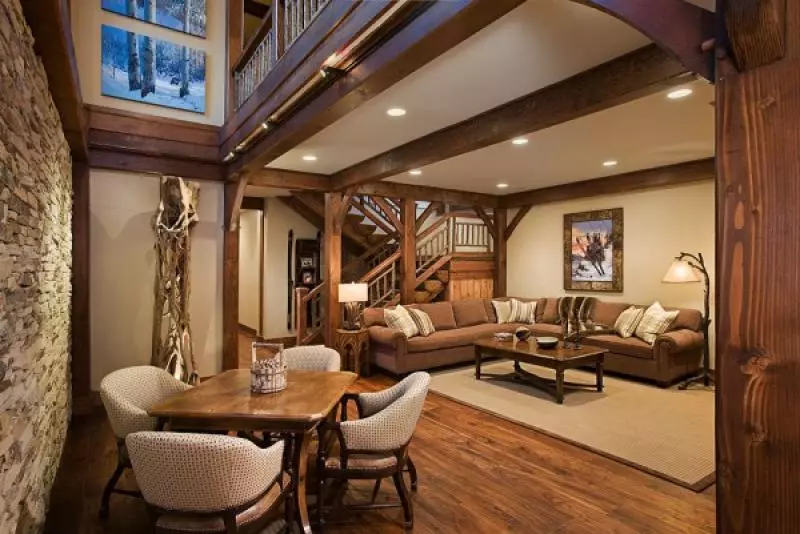 Contrasting white and black color scheme in the German-styled living room with a dark floor. Castle-looking interior design with wooden transom ceiling, cow pelts, and a chest coffee table.
Contrasting white and black color scheme in the German-styled living room with a dark floor. Castle-looking interior design with wooden transom ceiling, cow pelts, and a chest coffee table.
Furniture: Where Functionality Meets Elegance
In the German style, furniture is carefully selected for its functional value. Aesthetics take a backseat to practicality. Proportions play a crucial role, with comfortable armchairs, soft sofas, small dressers, bedside tables, shelves, and coffee tables featuring thin legs. Furniture facades are elegantly simple, with minimalist handles. The overall angularity of larger pieces is softened by the gentle curves of smaller elements. For instance, a rectangular mahogany table in the kitchen pairs beautifully with chairs sporting semicircular seats and carved backs.

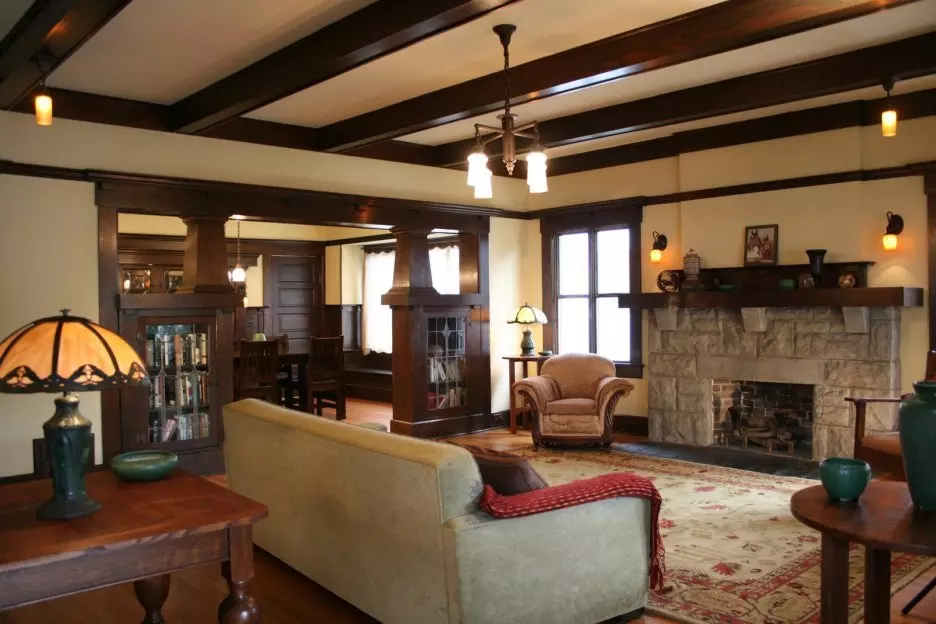 Great open space interior design in German with floor materials zone delimiting. Dark noble wood as a decorative element in a classic German house with a fireplace.
Great open space interior design in German with floor materials zone delimiting. Dark noble wood as a decorative element in a classic German house with a fireplace.
Illuminating the Space: Lighting and Fixtures
Natural light floods German interiors through rectangular windows, often adorned with minimal curtains. The central lighting usually consists of a simple, understated ceiling chandelier. Additional sources of "working" light, such as lamps and sconces with glass shades, are strategically positioned along the perimeters. In rooms with podiums or hanging furniture, decorative lighting is employed to highlight these architectural features.
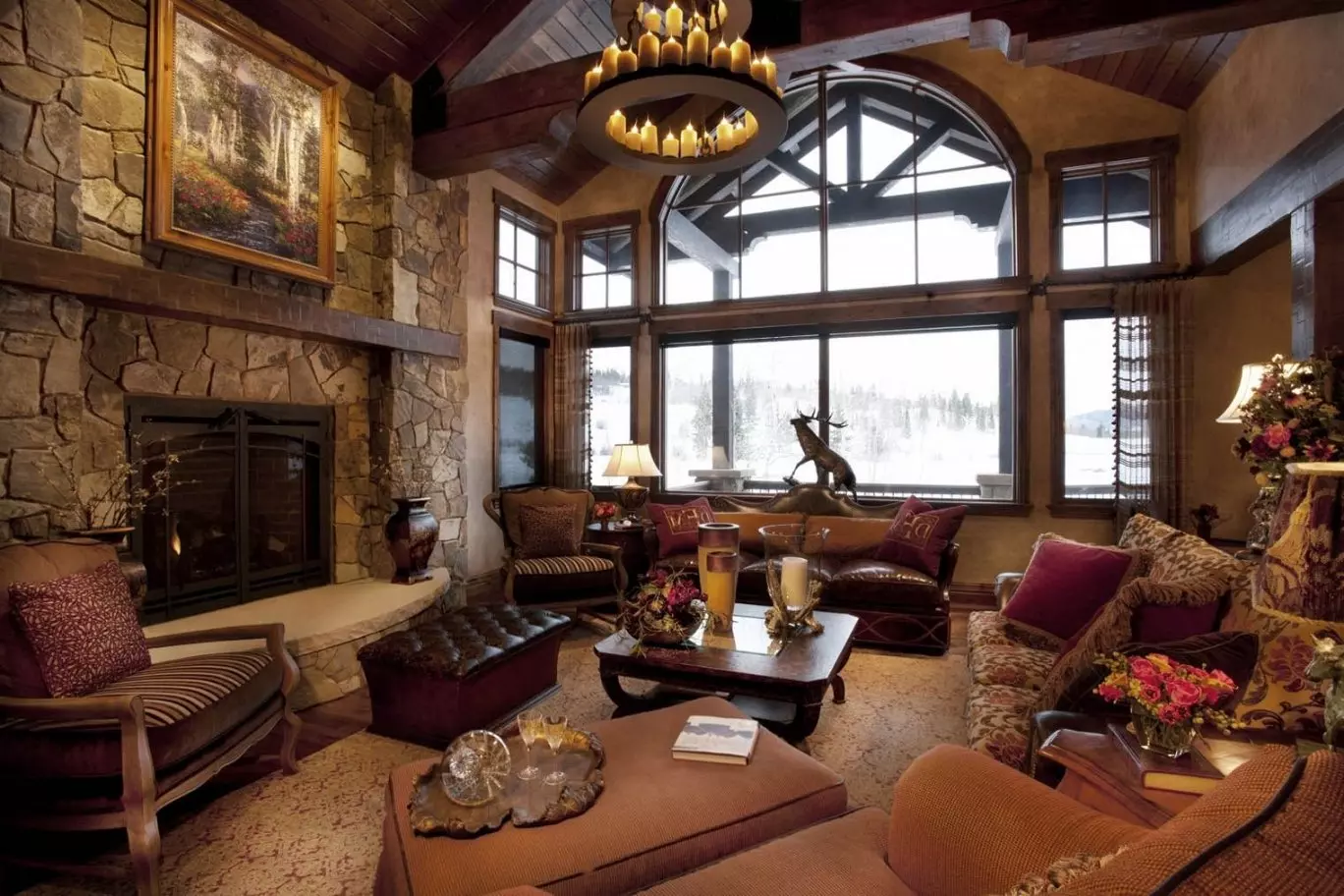
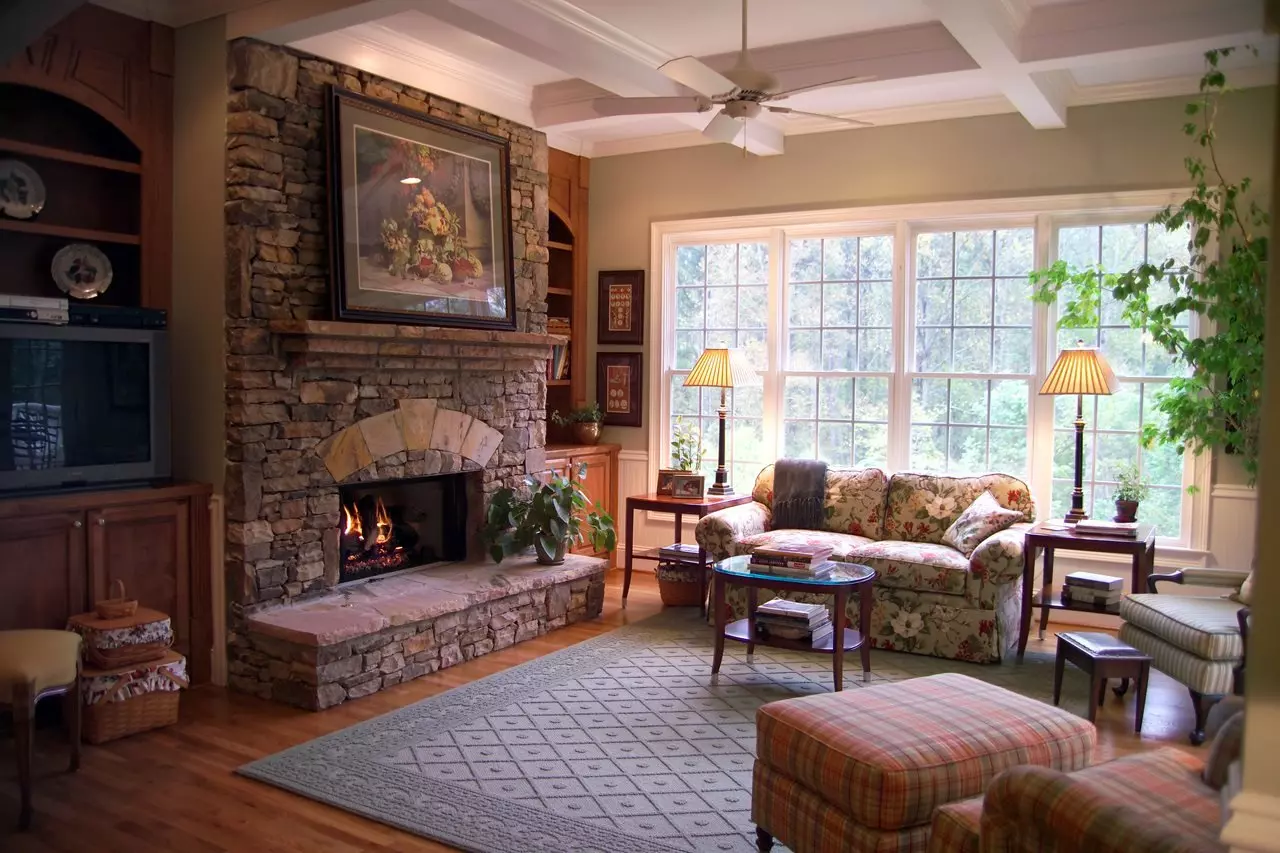 Separate building with its own German-style interior and glass roof on wooden constructions. Chalet-styled house interior with huge windows and candlesticks in a medieval chandelier. Stone-clad wall with a fireplace.
Separate building with its own German-style interior and glass roof on wooden constructions. Chalet-styled house interior with huge windows and candlesticks in a medieval chandelier. Stone-clad wall with a fireplace.
Textiles, Decor, and Accessories: Harmonizing Simplicity
The decor in German interiors is characterized by its simplicity and harmony with the overall design. Flowers and related elements play a prominent role, with vases, pots, and even bottles adding a touch of elegance. Bedrooms often feature live roses or chrysanthemums on the dressing table, while the living room showcases pots or elongated vases with dry branches. Miniature pots with indoor plants adorn the kitchen. German decor often celebrates the placement of groups of vases, each differing in shape, size, and glass color. The wall decor typically consists of a few paintings with neutral themes, sconces, and a clock. Natural fabrics dominate the textiles, with dense materials used for furniture upholstery. For a luxurious touch, chairs with velvet or velour seats are favored. Windows are dressed with floor-to-ceiling plain curtains. A picturesque composition of two-tone pillows can be used to enhance the sofa in the living room or the bed in the bedroom.
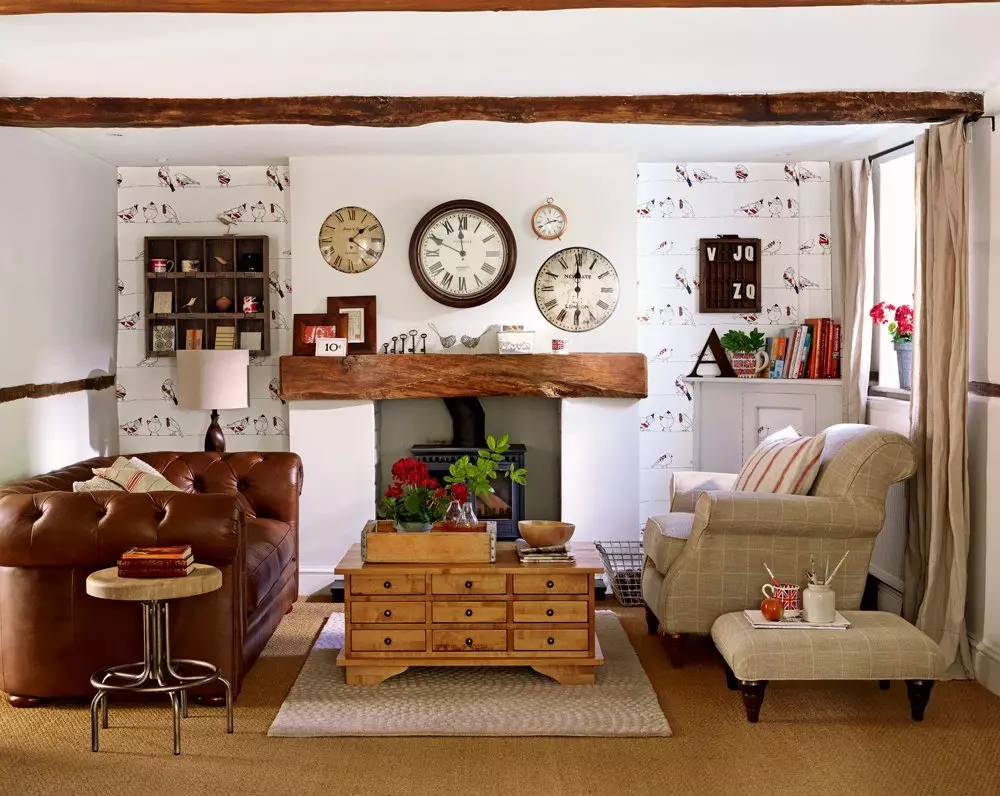
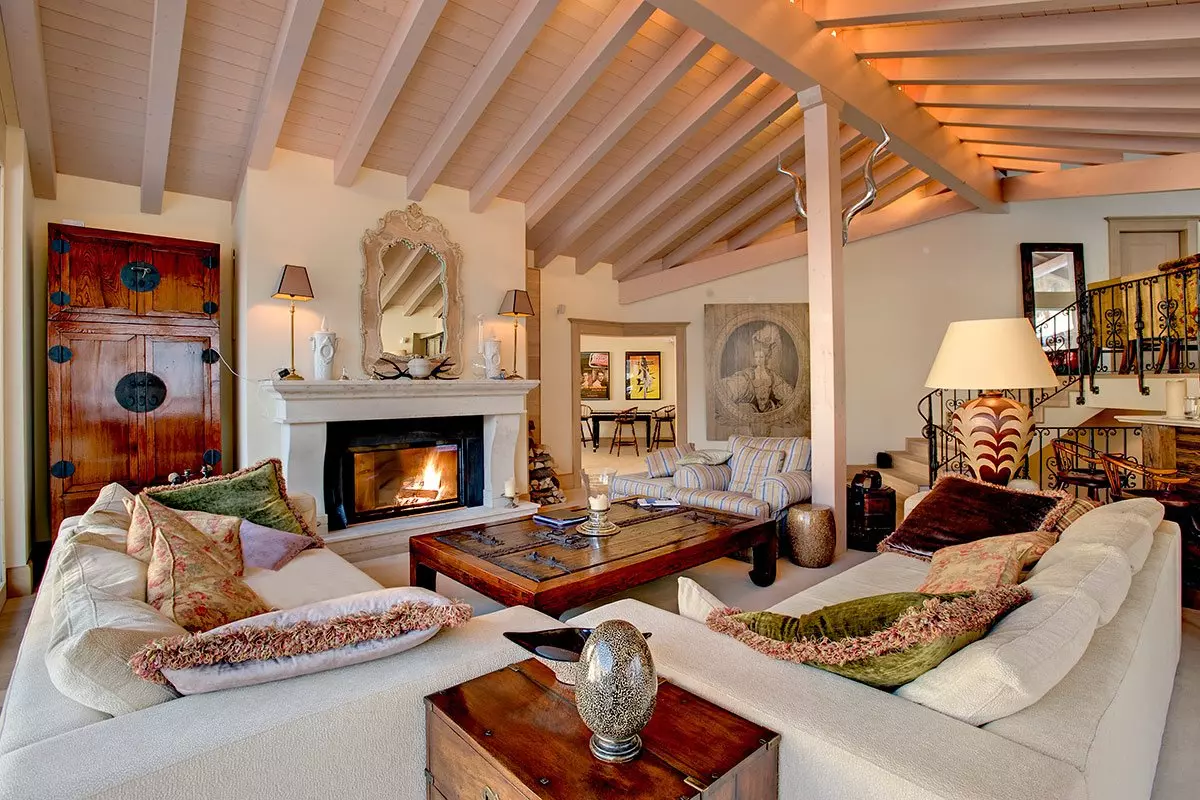 Ethnic interior design with a touch of French Provence and Danish style. Painted white open layout interior of a private house with a large wooden coffee table.
Ethnic interior design with a touch of French Provence and Danish style. Painted white open layout interior of a private house with a large wooden coffee table.
Let's Explore Some Interior Examples
The German style, with its minimalistic charm, pairs well with modern design, art deco, and loft styles. Each room can showcase the German style from a unique perspective by choosing different colors and accent decor. Here are some examples to inspire you:
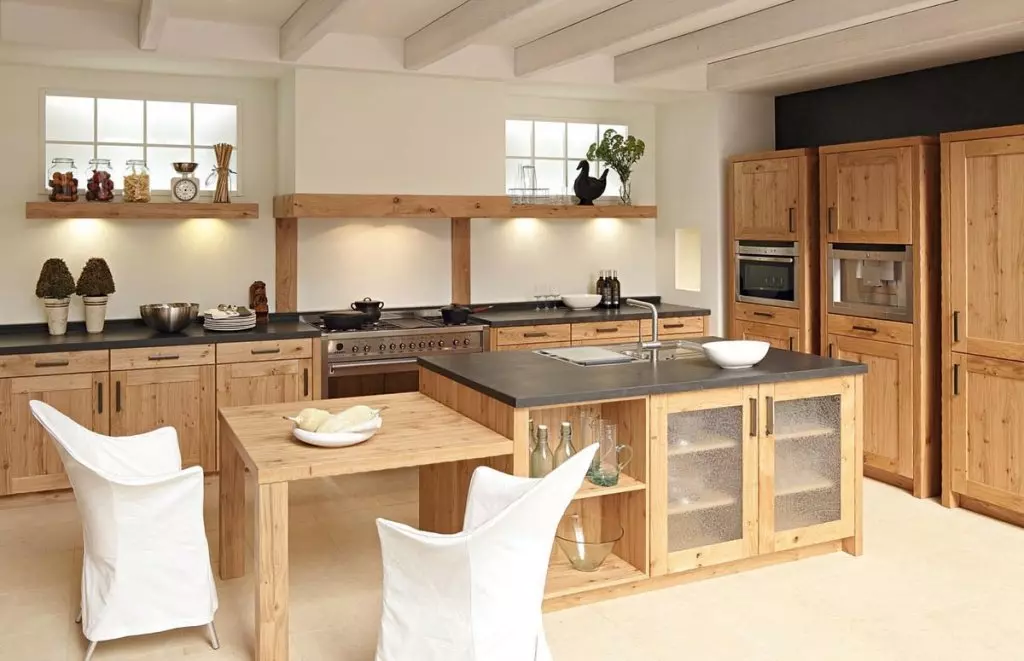 Exquisite German-style example in a private house with a large number of windows and pastel colors.
Exquisite German-style example in a private house with a large number of windows and pastel colors.
Kitchen: Where Functionality Meets Dining
A German-style kitchen seamlessly combines the cooking area and dining group. If space allows, position the dining table adjacent to the furniture set, allowing it to double as an additional work surface when needed. Opt for a ceiling structure with bulbs and hooks to hang small kitchen utensils. A convenient sideboard dining table with closed shelves adds extra storage space while providing a comfortable dining experience. Light wood is ideal for small kitchens, while dark chocolate complements larger spaces. A white furniture set can be embellished with wicker baskets, replacing some of the drawers for storing non-perishable items. For flooring, choose large ceramic tiles in white or opt for surfaces mimicking marble or wood. Plain vinyl wallpaper or moisture-resistant plaster can be used to adorn the walls. Decorate with plates on stands, a composition of fruits in a glass bowl, and a bouquet of fresh flowers to enhance the room's style.
 Laconic interior design with unusual wooden blacktop furniture.
Laconic interior design with unusual wooden blacktop furniture.
Living Room: A Haven of Minimalism
The German-style living room embodies the essence of minimalism. Opt for a wide sofa with soft brown leather upholstery and place a coffee table nearby. The table's foldable "wings" offer additional space when needed. Place a short-pile rug with rare white splashes under the coffee table to add texture. A narrow hanging cabinet serves as both a TV stand and storage space. To add visual interest, mount open wooden shelves beside it for displaying books. Two-tone curtains provide a touch of class to the windows. If space permits, consider incorporating a fireplace into the design. In modern interiors, portable bio-models or electric fireplaces are suitable alternatives. Decorate the room sparingly with a wall clock, one or two paintings, indoor plants in pots, and a round crystal chandelier. Complete the ambience with a pair of lamps in each zone.
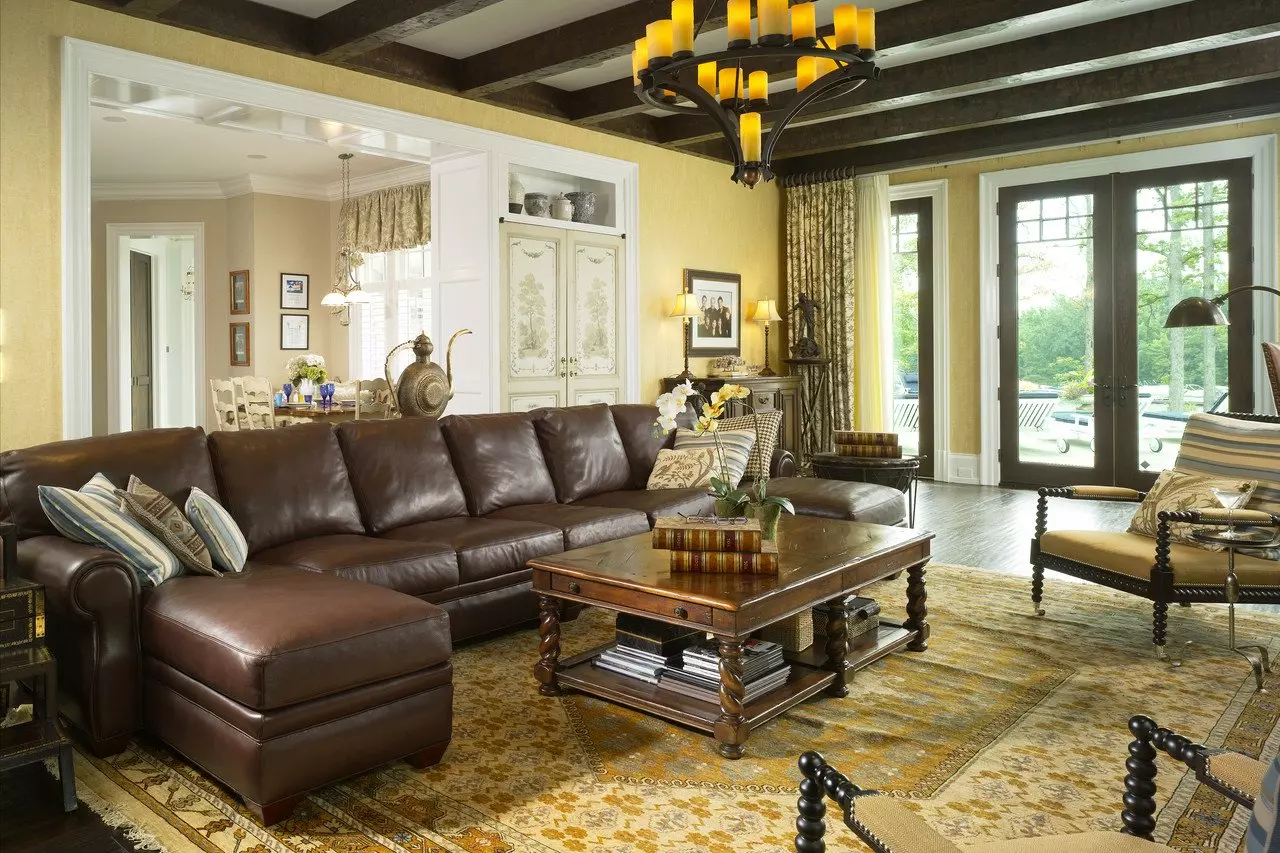 Chocolate brown leather sofa and noble lacquered table alongside a dark wooden ceiling in a German-styled interior.
Chocolate brown leather sofa and noble lacquered table alongside a dark wooden ceiling in a German-styled interior.
Bedroom: Serenity and Simplicity
The bedroom in the German style exudes tranquility and simplicity. Decorate the ceiling with gray wood beams to create a contrast with the white plaster. Choose a wooden or metal bed with a rare wrought-iron decor, adorned with a checkered or striped bedspread. Enhance the composition with a pair of pillows featuring identical patterns but in different colors. Dress the windows with thick, heavy curtains in pastel shades. Finish the walls with plaster or light wallpaper. Accentuate the head of the bed with boards adorned by the deck method. No additional decorations are necessary, as the textured wall compensates for their absence. Place ebony bedside tables with high, thin legs on either side of the bed. Each table can be topped with a lamp featuring a simple fabric shade. Instead of a wall-mounted mirror, opt for a mobile model with a "leg." Paired sconces emphasize the texture of the accent wall. Cover the floor with a soft shade of baked milk in a short pile. Accentuate the room with a floor vase containing dry twigs or a large pot with a houseplant.
 Accent black headboard wall in the German-styled bedroom with a large platform bed.
Accent black headboard wall in the German-styled bedroom with a large platform bed.
Hallway and Corridor: Welcome in Style
For the hallway in the German style, consider a furniture set comprising a wardrobe, a hanger, and a bench for changing shoes. Opt for light wood for smaller spaces and prioritize white or gray for larger areas. Add a short-pile rug that is easy to vacuum and clean. Decorate one wall with a rectangular mirror framed in wood or frameless, complete with sconces on either side. In wider hallways, place a cabinet with drawers beneath the mirror for storing small items. Keep furniture facades simple, smooth, and devoid of excessive decor. Use groups of vases in various shapes, sizes, and glass colors to add a touch of elegance.
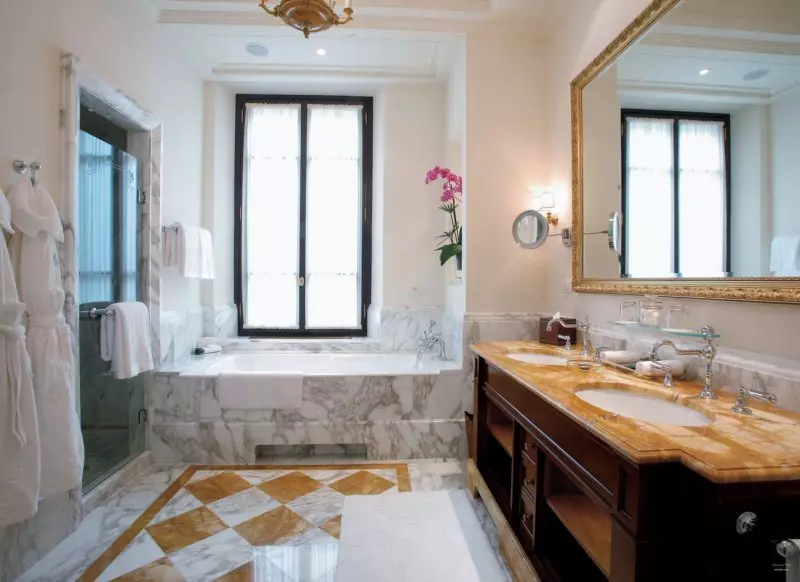 Private house with a light color scheme design and minimalistic furnishing in the corridor.
Private house with a light color scheme design and minimalistic furnishing in the corridor.
Bathroom and WC: Serene Simplicity
In the German style, bathrooms often feature large ceramic tiles. Instead of pastel shades, consider surfaces that mimic the texture of wood for a unique touch. Use two shades within the same color spectrum to prevent surfaces from blending together. For furniture, opt for white or gray to visually expand the space. A square rimless mirror with sconces in glass shades completes the sink area. Minimal decor in this room consists of an elongated vase with a composition of fresh flowers atop a cabinet. Choose a simple white or gray rug for the floor. Suspended toilet bowls work well in combined bathrooms. Use a frosted glass partition without a pattern to separate the toilet from the rest of the room.
 Marble-sided bathtub and tiled floor in the bathroom.
Marble-sided bathtub and tiled floor in the bathroom.
Embrace German Interior Design
German interior design captures the hearts of many with its naturalness, simplicity, and occasional touch of primitiveness. Designers appreciate its versatility, as it easily adapts to both spacious rooms and compact spaces. While the German style may not suit everyone's taste, it offers an exquisite and elegant design option. Quality and natural materials take center stage, making German-style design investments worth considering. Additionally, a basic understanding of floristry and floriculture is beneficial, as live plants are integral to every German interior.
Take inspiration from the timeless elegance of German interior design and create a space that exudes subtle sophistication and functionality.









